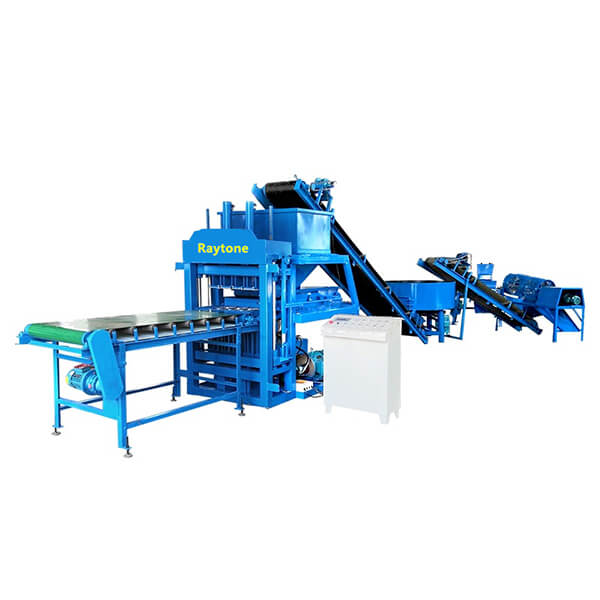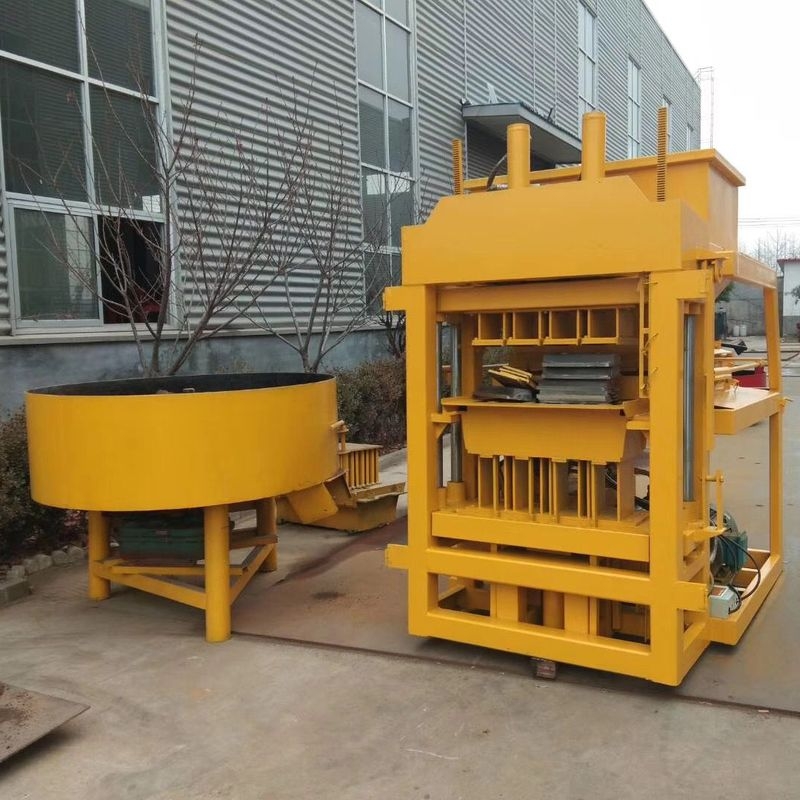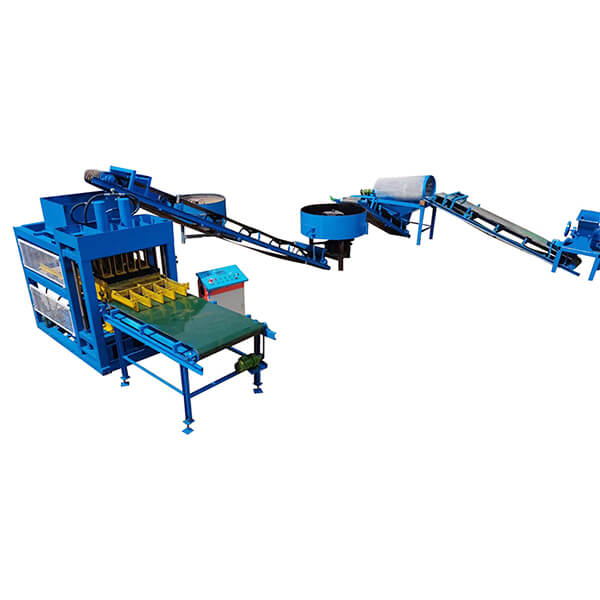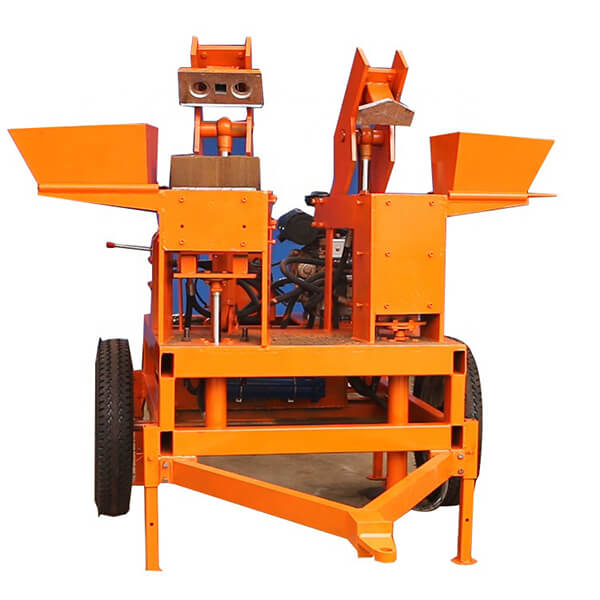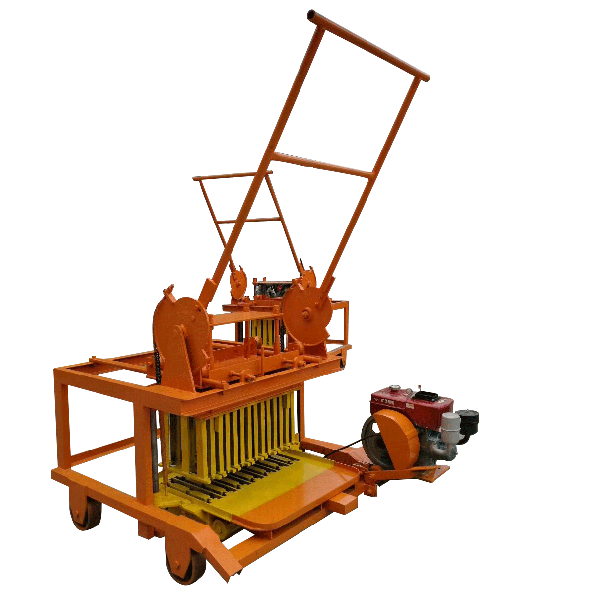The key to producing high-quality blocks with a manual block machine like the QT4-35 manual brick making machine lies in the concrete mix. The ideal mix for manual block-making machines combines cement, sand, gravel, and water in optimal proportions. A well-balanced mix typically consists of 1 part cement, 4 parts sand, and 2 parts gravel, with water added gradually to achieve the right consistency. This ratio ensures blocks with good strength, durability, and appearance. Adjustments may be necessary based on local materials and specific block requirements. Proper mixing and curing are crucial for achieving the best results with your manual brick making machine.

Understanding the Importance of Concrete Mix in Manual Block Production
The Role of Concrete Mix in Block Quality
The concrete mix plays a pivotal role in determining the quality of blocks produced by manual block machines. A well-formulated mix ensures that the blocks have adequate strength, durability, and aesthetic appeal. When using a QT4-35 manual brick making machine or similar equipment, the right mix can significantly impact the final product’s performance and longevity.
The concrete mix affects various properties of the blocks, including:
– Compressive strength
– Water resistance
– Dimensional stability
– Surface finish
– Curing time
By optimizing the concrete mix, producers can enhance these properties and create blocks that meet or exceed industry standards.
Factors Affecting Concrete Mix Design
Several factors influence the design of an effective concrete mix for manual block machines:
– Local material availability and quality
– Climate conditions
– Specific block requirements (e.g., load-bearing capacity, water resistance)
– Production volume and efficiency goals
– Economic considerations
Considering these factors helps in tailoring the mix to specific production needs and environmental conditions, ensuring optimal results with manual block-making equipment.
Benefits of Optimizing Concrete Mix for Manual Block Machines
Investing time and effort in perfecting the concrete mix for your manual block machine can yield numerous benefits:
– Improved block quality and consistency
– Reduced material waste
– Enhanced production efficiency
– Lower production costs
– Increased customer satisfaction
These advantages make optimizing the concrete mix a crucial aspect of successful manual block production operations.
Key Components of an Effective Concrete Mix for Manual Block Machines
Cement: The Binding Agent
Cement is the primary binding agent in concrete mixes for manual block machines. It reacts with water to create a paste that holds the aggregates together. The type and quality of cement used significantly impact the strength and durability of the blocks produced.
For manual block production, Portland cement is commonly used. It’s essential to choose a cement grade that meets the required strength specifications for your blocks. Generally, a Type I or Type II Portland cement is suitable for most applications.
The amount of cement in the mix affects both the strength and cost of the blocks. While using more cement can increase strength, it also raises production costs. Finding the right balance is crucial for producing high-quality blocks efficiently with your manual brick making machine.
Aggregates: Sand and Gravel
Aggregates, consisting of sand and gravel, make up the bulk of the concrete mix. They provide volume, strength, and economy to the blocks. The quality and proportions of these materials greatly influence the properties of the final product.
Sand should be clean, well-graded, and free from organic impurities. It fills the voids between larger particles and contributes to the mix’s workability. Coarse sand is generally preferred for block production as it enhances strength and reduces shrinkage.
Gravel or crushed stone serves as the coarse aggregate. It should be clean, hard, and durable. The maximum size of the coarse aggregate is typically limited to 3/8 inch (9.5 mm) for most manual block machines. Using well-graded aggregates can improve block density and strength.
Water: The Catalyst for Chemical Reactions
Water is essential in the concrete mix as it activates the cement and enables the chemical reactions that lead to hardening. The water-cement ratio is a critical factor in determining the strength and workability of the mix.
For manual block production with a manual block machine, the ideal water content is typically lower than that used in poured concrete. This results in a drier mix that can hold its shape immediately after molding. The exact amount of water needed may vary based on the moisture content of the aggregates and local climate conditions.
It’s crucial to use clean, potable water free from contaminants that could interfere with the cement’s hydration process or affect the block’s final properties. Properly controlling water content is key to achieving consistent quality with your QT4-35 manual brick making machine.
Mixing and Production Techniques for Optimal Results
Proper Mixing Procedures for Manual Block Machines
Achieving the right consistency in your concrete mix is crucial for producing high-quality blocks with a manual block machine. The mixing process should be thorough and consistent to ensure uniform distribution of all components.
Start by combining the dry ingredients – cement, sand, and gravel – in the correct proportions. Mix these thoroughly before adding water gradually. This approach allows for better control over the final consistency of the mix. When using a QT4-35 manual brick making machine or similar equipment, aim for a mix that is moist enough to hold together when squeezed, but dry enough to maintain its shape when released.
Using a mechanical mixer can help ensure consistency, especially for larger production volumes. However, for smaller operations, hand mixing can be effective if done carefully and systematically.
Molding and Compaction Techniques
The molding and compaction process is where the concrete mix transforms into block shapes. With manual block machines, this step requires careful attention to detail and consistent technique.
Fill the molds of your manual block machine evenly with the prepared mix. Overfilling can lead to inconsistent block heights, while underfilling may result in weak spots. Once filled, apply consistent pressure to compact the mix. This compaction is crucial for achieving the desired density and strength in the final product.
Many operators of manual brick making machines develop a rhythm for filling, compacting, and ejecting blocks. This rhythm, combined with proper technique, can significantly improve production efficiency and block quality.
Curing and Quality Control
Proper curing is essential for developing the full strength potential of your concrete blocks. After molding, blocks should be protected from rapid drying, extreme temperatures, and physical damage.
Ideal curing conditions involve maintaining moisture and a consistent temperature for several days after production. This can be achieved through various methods, such as covering the blocks with plastic sheets or using a curing compound.
Implement a quality control system to regularly test the strength and dimensional accuracy of your blocks. This can help you identify and address any issues with your mix design or production process promptly.
By focusing on these mixing and production techniques, you can maximize the performance of your manual block machine and consistently produce high-quality concrete blocks.
Conclusion
Mastering the art of creating the best concrete mix for manual block machines is crucial for producing high-quality blocks efficiently. By understanding the role of each component, optimizing the mix design, and implementing proper production techniques, you can significantly enhance the performance of your QT4-35 manual brick making machine or similar equipment. Remember that continuous experimentation and quality control are key to refining your process and achieving outstanding results in manual block production.
Contact Us
At Raytone Machinery, we’re committed to helping you achieve excellence in block production. Our range of manual block machines, including the versatile QT4-35 manual brick making machine, is designed to meet diverse production needs. For expert advice on optimizing your concrete mix or to explore our block machine solutions, contact us at hazel@raytonechina.com. Let us help you take your block production to the next level with our high-quality, cost-effective machinery and unparalleled support.
References
- Johnson, A. (2022). “Concrete Mix Design for Block Production: A Comprehensive Guide”. Journal of Construction Materials, 15(3), 245-260.
- Smith, B. & Davis, C. (2021). “Optimizing Manual Block Machine Operations: Best Practices and Techniques”. International Journal of Construction Engineering, 8(2), 112-128.
- Brown, E. (2023). “The Impact of Aggregate Quality on Concrete Block Strength”. Construction and Building Materials, 32(4), 578-592.
- Wilson, D. et al. (2022). “Water-Cement Ratio: A Critical Factor in Manual Block Production”. Cement and Concrete Research, 53, 89-104.
- Thompson, R. (2021). “Curing Techniques for Enhanced Concrete Block Quality”. Advances in Concrete Technology, 18(1), 67-82.
- Garcia, M. & Lee, S. (2023). “Economic Analysis of Manual vs. Automated Block Production Methods”. Journal of Construction Economics, 11(3), 201-215.


